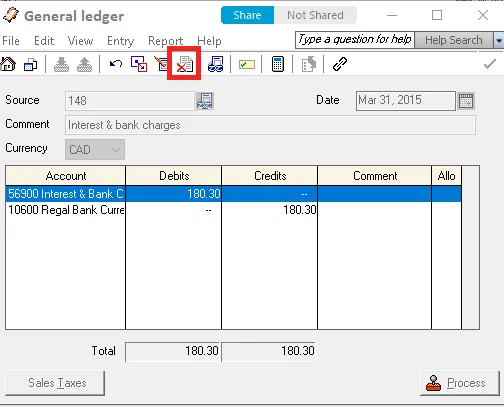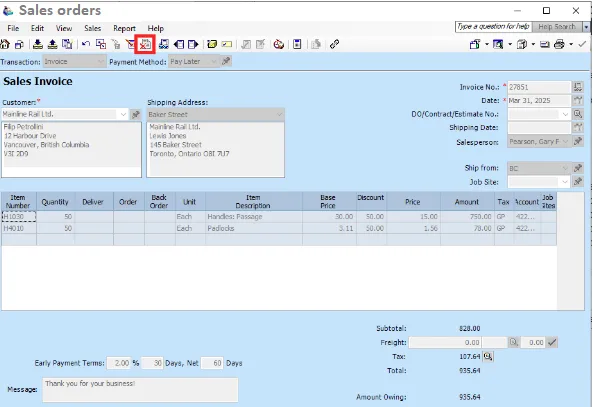Sage 50 is an accounting desktop software. It is created to streamline diverse accounting jobs and operations. It needs to install and run on a local computer or network. The term “delete transactions on Sage 50” in the context of Sage 50 typically refers to the action of removing or deleting specific transactions from your accounting records within the Sage 50 software.
This software gives access to many tools to manage-
- Financial records
- Monitor transactions
- Generate financial reports
- Perform other accounting-related roles
Accounting desktop software delivers many benefits over manual bookkeeping or spreadsheets. It automates repetitive operations, decreases errors, enhances accuracy, and is time-saving. It is a centralized platform for arranging and storing financial information. Easy to access for accounting and decision-making.
These software solutions offer general-
- Ledger management
- Accounts payable
- Receivable tracking
- Inventory management
- Payroll processing
- Financial statement generation
- Tax preparation, and more
They may also combine with other business applications, like customer relationship management (CRM) systems or enterprise resource planning (ERP) software, to deliver an easy flow of data across various divisions.
Accounting desktop software can be customized to meet the particular needs of other industries and trades of ranging sizes. Some software solutions deliver essential functionalities fit for small businesses or people, while others deliver advanced elements for larger associations with difficult financial functions.
If you have any specific query, also get in touch with the experts of live chat.
While cloud-based accounting software solutions have become demanded in recent years. As these software solutions offer data safety, offline access, and tailored options. Yet it’s essential to remember that the industry is growing, and more businesses are transitioning to cloud-based solutions for accounting demands.
What is Sage 50?
Sage 50 is a famous accounting software designed for small and medium-sized firms. Developed by Sage, a global enterprise software business. Sage 50 offers many features and tools to help businesses manage their financial processes.
The software has functionalities that are mandatory required, like-
- General ledger

- Accounts payable
- Receivable
- Inventory management
- Payroll processing
- Cash flow tracking
- Financial reporting
It helps businesses to watch not only income and expenses but also helps to create invoices, supervise vendors, and customers, conform bank statements, and generate varied financial statements like balance sheets and profit and loss reports.
Suggested Reading: Void Existing Invoice Window Not Opening in Sage 50
Sage 50 also presents features to manage tax calculations and reporting, making it more effortless for firms to pursue tax regulations. It provides an interface and permits customization based on exact business requirements.
The software is obtainable in various arrangements, like Sage 50 cloud. This offers features like cloud access, mobile apps, and integration with other business applications.
Important Of Sage 50
Sage 50, also means Peachtree Accounting, is a known accounting software. It is also used by small and medium-sized businesses. It offers a range of features to help businesses manage their financial operations. It’s important to exercise caution when delete transactions on Sage 50 reconciled, as this action permanently removes them from your accounting records.
Here are some fundamental reasons why Sage 50 is crucial:
1. Financial Control
Sage 50 delivers strong financial management options, like-
- General ledger
- Accounts payable
- Receivable
- Bank reconciliation
- Budgeting
- Financial reporting
It helps businesses handle their income, expenses, and cash flow, assuring precise financial records for informed decision-making.
2. Efficient Bookkeeping
It eases bookkeeping by automating operations like inventory, invoicing, and payroll. It lets businesses simplify their functions, decrease errors, and save time by automating repetitious tasks.
3. Accurate Reporting
The software offers a combination of reporting chances, allowing businesses to generate factual financial reports. These reports deliver useful insights into a business’s financial health along with compliance requirements.
4. Inventory Management
It provides inventory management features that allow businesses to track and manage their stock levels, track costs, and manage buy orders and sales orders.

5. Payroll Processing
Managing payroll can be difficult and time-consuming, but it simplifies the process by automating tax deductions and generating paychecks. It offers precise and timely payroll processing, adhering to tax regulations, and more.
Suggested Reading: Sage 50 Payroll Tax Calculation Errors
6. Secure
Sage 50 includes strong security bars to shield sensitive financial data, like access controls, regular data backups, and encryption. This helps businesses keep the confidentiality and integrity of their financial data, decreasing the chance of unauthorized access or loss of data.
7. Customization:
It also works with other software, like customer relationship management (CRM) systems or e-commerce platforms, letting seamless data flow between diverse systems. Also, the software offers customization opportunities, allowing businesses to tailor the software to their distinctive functions and needs.
Suggested Reading: Sage Not Showing All Transactions
How to Delete Transactions on Sage 50?
Due to many reasons the need for deleting the transactions triggered. The reasons include data entry errors, duplicates, voided, unauthorized transactions, and more. Moreover, with time Sage 50 database may collect irrelevant transactions. Deleting these transactions helps to maintain your financial records organized and effortless to navigate.
Follow the below steps to delete transactions in Sage 50–
- Open the company’s file in Sage 50 that includes the transactions you want to erase.
- Click “Tasks” in the menu at the top of the screen and click on “Transactions & Sales.“
- From the drop-down menu, choose the type of transaction you want to delete. For example, if you want to delete an invoice, select “Invoices.”
- Locate the transaction you wish to delete from the list displayed on the screen. You can use the search or filter options to help you find the specific transaction.
- Once you’ve found the transaction you want to delete, right-click on it or select it and click on the “Edit” button.
- In the transaction edit window, look for a “Delete” or “Void“. Click on this to remove the transaction.
- A confirmation notification may emerge to confirm the deletion. Read the message carefully, as deleting a transaction cannot be undone. If you’re sure, confirm the deletion.

Conclusion
Make sure to have a backup before deleting the transaction. After deleting these transactions will never appear in your accounting records.
It’s significant to note that when delete transactions on Sage 50, you should practice caution and make sure that you have a backup of your data. Moreover, depending on your particular accounting requirements and regulations, it may be required to retain some transaction records for a specific period of time. Sage 50 plays a crucial role in delivering efficient financial management, accurate reporting, and streamlined operations for businesses of all sizes. It offers a complete set of tools that contribute to informed decision-making, better productivity, and business success.
To get the best assistance regarding the Delete Transactions on Sage 50, you can simply dial +1-347-967-4079 to contact our Sage 50 Specialists Team.
Frequently Asked Questions
There can be several reasons why you may be unable to delete a transaction in Sage Accounting. Here are a few possible explanations:
👉 User Permissions: Your user account may not have the necessary permissions to delete transactions. In Sage Accounting, certain user roles or access levels may have restrictions on delete transactions on Sage 50. You should check with your system administrator or the person who set up your user account to ensure you have the required privileges.
👉 Locked Periods: Sage Accounting allows you to lock periods to prevent modifications to transactions in closed accounting periods. If the transaction you are trying to delete falls within a locked period, you won’t be able to delete it. You can check the period lock settings in your software and either unlock the relevant period or consult with your administrator to make the necessary changes.
👉 Integrated Systems: If your Sage Accounting software is integrated with other systems or modules, such as inventory management or point-of-sale systems, deleting a transaction in Sage may have implications on the linked data in those systems. In such cases, you might need to follow specific procedures or contact support for guidance on how to properly handle the deletion.
To correct a transaction in Sage 50, you can follow these general steps:
👉 Launch the Sage 50 software and open your company file.
👉 Identify the module that contains the transaction you need to correct. For example, if it’s a sales transaction, go to the “Sales” or “Invoicing” module.
👉 Locate the specific transaction that requires correction. You can use search filters, sorting options, or browse through the list of transactions.
👉 Once you’ve found the transaction, select it by clicking on it. This should highlight the transaction or open it in a separate window, depending on the software version and configuration.
